A Field Insider’s Take on Oil Filter Paper: What Matters in 2025
If you spec or buy oil filter paper for engines, compressors, or hydraulic kits, you already know the stakes: micron efficiency, dust-holding, stable pleating, and resin cure that won’t drift under heat. To be honest, the market’s moving fast—longer drain intervals, low-SAPS oils, and tighter OEM tests. Here’s what I’m seeing on the shop floor and in lab data, without the brochure-speak.
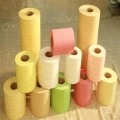
Industry trends (and what they mean)
– Efficiency is nudging up: β10 ≥ 75 and β20 ≥ 200 is increasingly expected on multi-pass rigs.
– Heat ages media faster, so resin systems with better thermoset control (phenolic or acrylic blends) are winning.
– Bio-based and low-viscosity oils add a twist: compatibility checks that used to be “nice-to-have” are essential now.
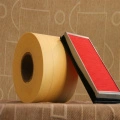
What the good stuff looks like (quick specs)
This oil filter paper family covers wood pulp, phenolic, acrylic, and special formulations—balanced for pleat stability and dust capacity.
| Parameter | Typical value (≈, real-world use may vary) |
|---|---|
| Basis weight | 120–180 g/m² |
| Thickness | 0.35–0.70 mm |
| Resin system | Phenolic or acrylic; resin content ≈ 10–30% |
| Nominal pore size | 10–40 μm |
| Multi-pass efficiency | β10 ≥ 75; β20 ≥ 200 (ISO 16889-style) |
| Burst strength | ≥ 350 kPa |
| Permeability | Frazier 8–20 cfm/ft² @ 0.5″ H2O |
| Temperature limit | 140–160°C (resin dependent) |
| Service life | ≈10,000–20,000 km or 300–500 h (duty/cycle dependent) |
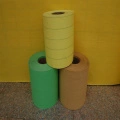
How it’s made (and tested)
– Materials: wood pulp base with phenolic/acrylic impregnation; special blends for low-ash oils.
– Methods: wet-laid sheet, resin impregnation, B-stage drying, calendering, crepe control, curing, slitting.
– QC & tests: grammage (TAPPI), thickness and burst; pore size distribution; ISO 16889 multi-pass; ISO 4548-12 dust holding for full-flow; fluid compatibility per ISO 2943; dimension stability and pleat memory checks. Certifications often include ISO 9001 and IATF 16949 for auto lines. Many customers say the tighter cure window is what keeps pleats from relaxing after 500 hours—seems right to me.
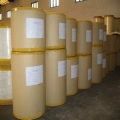
Applications and advantages
- Automotive and heavy-duty engine filters (OEM and aftermarket)
- Marine lube systems and industrial compressors
- Hydraulic return-line elements (with appropriate oil filter paper grades)
Advantages: predictable β-ratios, stable pleating, high dust capacity, and clean resin cure. Actually, the easier thing to feel is faster pleater throughput with fewer web breaks—shop teams notice.
| Vendor | MOQ | Lead time | Customization | Certs | Notes |
|---|---|---|---|---|---|
| FiltersMaterial (Handan, Hebei) | ≈500 kg | 7–15 days | Resin load, pore size, roll width, color | ISO 9001, IATF 16949 | Strong on phenolic grades |
| Generic Importer | 1 ton | 20–30 days | Limited | Basic ISO 9001 | Variable cure consistency |
| Premium EU Maker | ≈300 kg | 10–20 days | Broad, lab-backed | IATF 16949, REACH | Higher price tier |
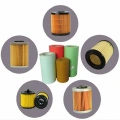
Customization, compliance, and real data
Options include basis weight, resin chemistry, hydrophilic/hydrophobic balance, roll width (up to ≈1200 mm), and pleatability tuning. Typical compliance: ISO 9001, IATF 16949, and material declarations (RoHS/REACH upon request). Lab snapshot: on ISO 16889 multi-pass, a phenolic grade showed β10=120 and β20=240 with dust holding ≈180 g/m² at terminal Δp 2.5 bar. In ISO 4548-12 runs, capacity improvements of 8–12% over last year’s lot were common.
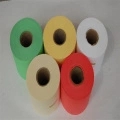
Mini case study
A fleet reman in the Midwest swapped to a special oil filter paper grade on 13L diesels. Same can, same pleat count. Result: average particle counts (ISO 4406) dropped from 18/16/13 to 17/15/12 and drain intervals extended from 12k to 15k miles. Not earth-shattering, but the ROI penciled fast. Their tech lead said the “pleats stopped relaxing after heat soak”—which tracks with tighter cure control.
Origin: Second Buliding and Studying No21 shiji street, Handan, Hebei China.
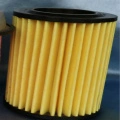
Raw material set
Wood pulp base; phenolic filter paper; acrylic filter paper; special grades for severe-duty oil filter paper applications where thermal cycling is brutal.
Authoritative standards and references
- ISO 16889: Hydraulic fluid power—Filters—Multi-pass method for evaluating filtration performance.
- ISO 4548-12: Methods of test for full-flow lubricating oil filters for internal combustion engines—Part 12: Filtration efficiency and dirt capacity.
- ISO 2943: Hydraulic fluid power—Filter elements—Verification of material compatibility with fluids.
- TAPPI T410, T411, T494: Grammage, thickness, tensile/burst test methods for paper.
- SAE J1858: Full-flow lubricating oil filters—Multipass method for evaluating filtration performance.
Hebei Fangyu Filter Material Technology Co.,Ltd is the leading innovative developer and manufacturer all kinds of filter materials in China.pocket filter media factory Located in the economically developed Handan Hebei specialized in various kinds of filter materials from Synthetic Media,Paint stop Filter Media Pre- filter Non Woven Fabric ,Wire Mesh Backed Laminated Filter Media,Ceiling filter Auto Cabin Filter Media, polypropylene filter media, Glass Microfiber Filter Media Nonwoven Fabric,Pre- filter non woven fabric, activated carbon filter materials, EN779 bag filter materials, HEPA filter media, air filter HEPA filter media and Filter Accessories.Our filter materials have passed ISO9001:2000 quality certification since 2005.Certified by ISO9001, UL2 and SGS, with emphasis on quality and service. Our strength is the ability to find innovative ways to meet marketplace or product requirements.activated filter media price|super blog